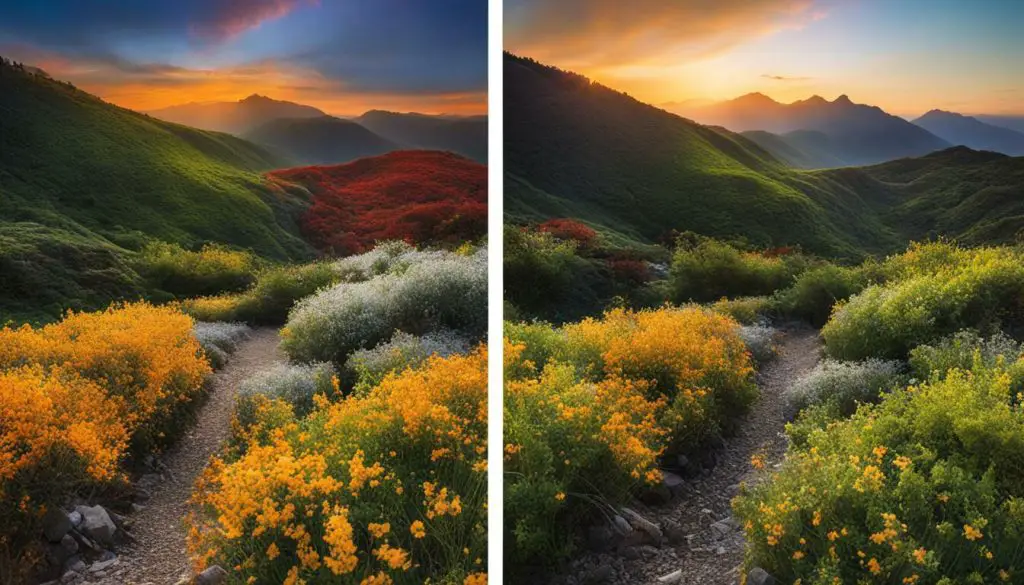
If you’re looking for the best JPEG format for your image needs, you’ve come to the right place. JPEG format is one of the most popular image formats used today, and it’s essential to understand which format is best for your specific requirements.
In this guide, we will help you navigate the world of JPEG formats and provide you with the information you need to make an informed decision. We will explore the different versions of JPEG formats available and weigh their individual benefits while highlighting the optimal picture quality you can achieve.
Key Takeaways:
- Understanding JPEG formats is crucial to selecting the right one for your image needs.
- There are different versions of JPEG formats, each with its own advantages and limitations.
- Select the best JPEG format based on your image requirements to achieve optimal picture quality.
Understanding JPEG Formats
Before we can determine the best JPEG format, it’s important to understand the basics of JPEG formats. JPEG, short for Joint Photographic Experts Group, is a widely used digital image compression format. It employs lossy compression techniques to reduce file size while maintaining an acceptable level of image quality.
The process of digital image compression involves removing some of the image data to reduce the file size. This reduction in size makes it easier to store and transmit digital image files. However, this compression also results in a loss in image quality, which can affect the level of detail and resolution in the image.
Lossy compression, the technique used in JPEG formats, removes some of the image data that is less visible to the human eye. This technique allows for greater compression of the image file while minimizing the loss in image quality. However, it’s important to note that the more an image is compressed, the greater the loss in quality.
Over the years, different versions of JPEG formats have been developed, each with its own advantages and limitations. The most common JPEG versions in use today are JPEG, JPEG 2000, and JPEG XR.
Did you know? JPEG is the most widely used image compression format for photographs on the internet.
JPEG Format
The JPEG format is one of the most common and widely used image formats in the world. It’s a lossy compression format that is designed to strike a balance between file size and picture quality. JPEG is perfect for storing and sharing images online, as it can compress images without losing too much data.
The Different Versions of JPEG Formats
There are several versions of the JPEG format available, each with its own advantages and limitations. The most common JPEG format used today is JPEG 2000. JPEG 2000 offers better compression rates than the original JPEG format, while also providing higher picture quality. It’s often used in professional settings, where high-quality images are required.
Another popular JPEG format is JPEG XR. This format is designed to work well with high-resolution images, making it ideal for photography and other image-intensive applications. JPEG XR offers better compression rates than the original JPEG format, but slightly lower than JPEG 2000.
Advantages of Using JPEG Formats
One of the biggest advantages of using JPEG formats is their ability to compress images without losing too much data. JPEG formats can significantly reduce the size of an image file, without significantly affecting its overall picture quality. This makes it an ideal format for sharing images online, where file size can be a concern.
JPEG formats are also widely supported by most web browsers and image editing software. This means that you can easily view and edit JPEG images, regardless of the platform you’re using.
Limitations of Using JPEG Formats
One of the main limitations of using JPEG formats is that they employ lossy compression techniques. This means that images stored in JPEG format can lose some of their image quality, especially if they are compressed too much. This can be particularly noticeable in high-resolution images or images with a lot of detail.
Another limitation of using JPEG formats is that they are not suitable for all types of images. For example, images with a lot of text or line art can suffer from compression artifacts when saved in JPEG format. In these cases, it’s better to use other formats like PNG or GIF.
Despite these limitations, JPEG formats remain popular and widely used due to their ease of use, widespread support, and ability to achieve a good balance between picture quality and file size.
